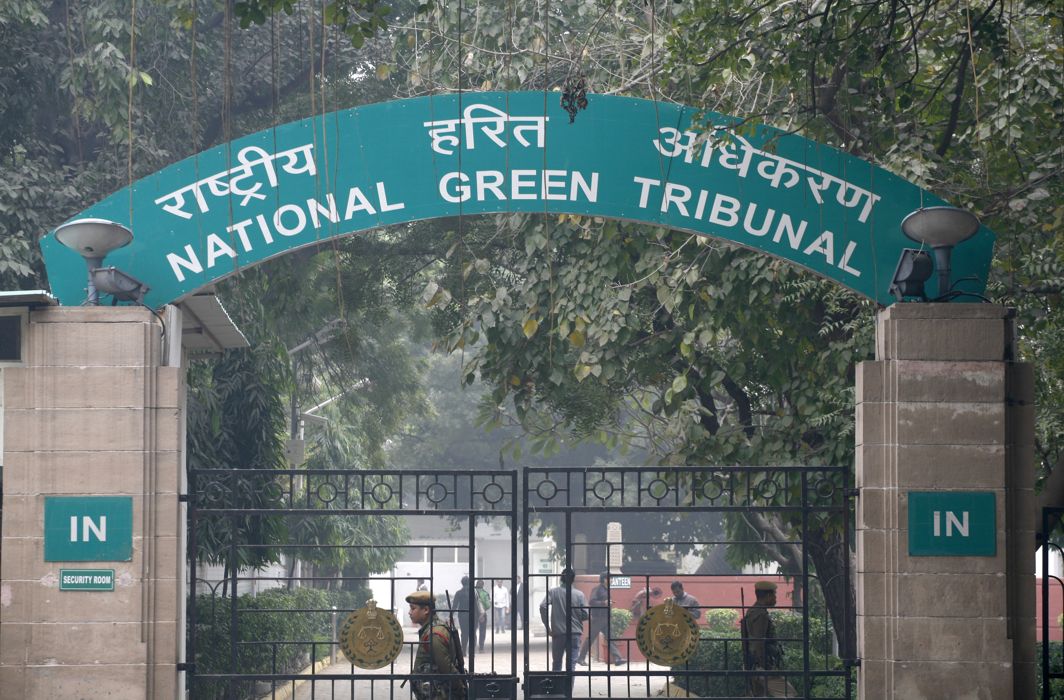The National Green Tribunal (NGT) recently directed the Haryana State Pollution Control Board to immediately take remedial action and to stop mining activity and to realize the environmental compensation according to rules and to submit the report within four weeks.
The Principal Bench of Acting Chairperson Sheo Kumar Singh, Justice Arun Kumar Tyagi, Dr. A. Senthil Vel heard an application raising Issue of illegal mining by a Group, Tehsil Gannaur, District Sonipat, Haryana. It is further contended that the unit is extracting sand from Yamuna beyond permissible quantity and without consent to operate in violation of section 33 (A) of the Water (Prevention and Control of Pollution) Act, 1974 and in violation of EC conditions.
The report submitted by the Pollution Control Board reveals that
(i) Unit was operating without valid CTO under Water Act, 1974 and Air Act, 1981 from the Board, thus violating the condition of environmental clearance.
(ii) Not submitted six monthly compliance report of the environmental clearance conditions.
(iii) Not submitted the report of Replenishment study of the mining in the River bed as per environmental clearance condition.
(iv) Not submitted copy of reports of regularly Monitoring of Ground Water level and quality have to be carried out in and around the mine lease by establishing a network of existing wells and constructing new piezometers during the mining operation. The monitoring have to be carried out four times in a year: Premonsoon (April-May), Monsoon (August), Post monsoon (November) and winter (January) and the data collected may be sent regularly to the ministry of Environment, Forest & Climate Change, its Regional Office Chandigarh, Central Ground water authority Regional Director, Ground Central Water Board, State Pollution Control Board and Central Pollution Control Board, but unit has not submitted the reports to HSPCB Sonepat.
(v) Not submitted copy of data on ambient air quality which will be regularly submitted to the ministry including its Regional Office located at Chandigarh and the State Pollution Control Board/ Central Pollution Control Board once in six months but date wise data along with Analysis reports has not been submitted for PM10, PM2.5, S02 & NOx.
(vi) Not submitted copy of the Environment statement for the preceding year.”
The Bench noted that the unit was inspected by Regional Officer and in its inspection report the letter has 3 been addressed to Chairman, Haryana State Pollution Control Board (Panchkula) with the facts that unit was operating without obtaining CTO from the board and no reply have been submitted in response to the notice.
Further the Bench noted that the matter was within the knowledge of the Regional Officer, HSPCB and inspite of the knowledge that the unit has no valid CTO it was indirectly permitted to operate without any valid CTO in violation of environmental rules. No further action has been taken to recover the environmental compensation which was assessed to the tune of Rs. 35,66,000/-. Inaction on the part of Regional Officer concerned reveals that the Regional Officer is supposed to do his duty sincerely, fairly, and honestly but he failed to exercise his duty sincerely, fairly, and honestly, and thus causing loss to the state exchequer by his inaction and indirectly permitting the unit to operate without obtaining CTO.
“The Member Secretary, HSPCB is directed to take disciplinary action against the concerned Regional Officer for negligence in performing his duties and indirectly permitting for illegal mining causing loss to state exchequer”, the Bench directed.
It is observed by the Bench that there is huge degradation of the environment on account of unregulated sand mining remains which is otherwise lucrative activity. It poses threat to bio-diversity, could destroy riverine vegetation, cause erosion, pollute water sources, badly affecting riparian ecology, damaging ecosystem of rivers, safety of bridges, weakening of riverbeds, destruction of natural habitats of organisms living on the riverbeds, affects fish breeding and migration, spell disaster for the conservation bird species, increase saline water in the rivers. It has direct impact on the physical habitat characteristics of the rivers such as bed elevation, substrate composition and stability, in stream roughness elements, depth, velocity, turbidity, sediment transport, stream discharge and temperature. Increase in demand of sand has placed immense pressure in the supply of sand resource and mining activities were going on illegally as well as legally without requisite restrictions. Lack of proper planning and sand management disturbs marine ecosystem and upset the ability of natural marine processes to replenish the sand.
The Supreme Court (in Deepak Kumar, supra) noted that core group was constituted by the MoEF&CC to examine the impact of minor minerals on riverbeds and ground waters. A draft report was prepared recommending mandatory preparation of mining plan on the pattern of mining plans for major minerals. Further recommendations are reclamation and rehabilitation of abandoned mines, proportion of hydro geo-logical balance for minerals below ground water table limiting depth of mining to 3 meter and identification on locations where mining should be permitted was required. There is need for identifying safety zones in the proximity of intendments. Thus, strict regulatory parameters were required for regulating mining of minor minerals. It was noted that in-stream mining lowers the stream bottom of rivers which may lead to bank erosion. Depletion of sand in the stream bed causes deepening of rivers which may result in destruction of aquatic and riparian habitats. It has impact on stream’s physical habitat characteristics.


